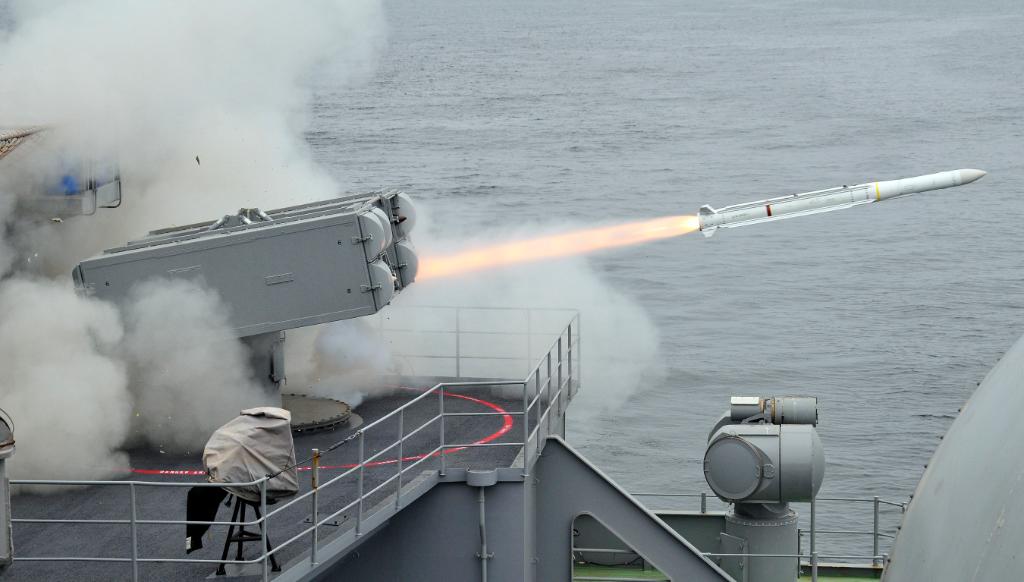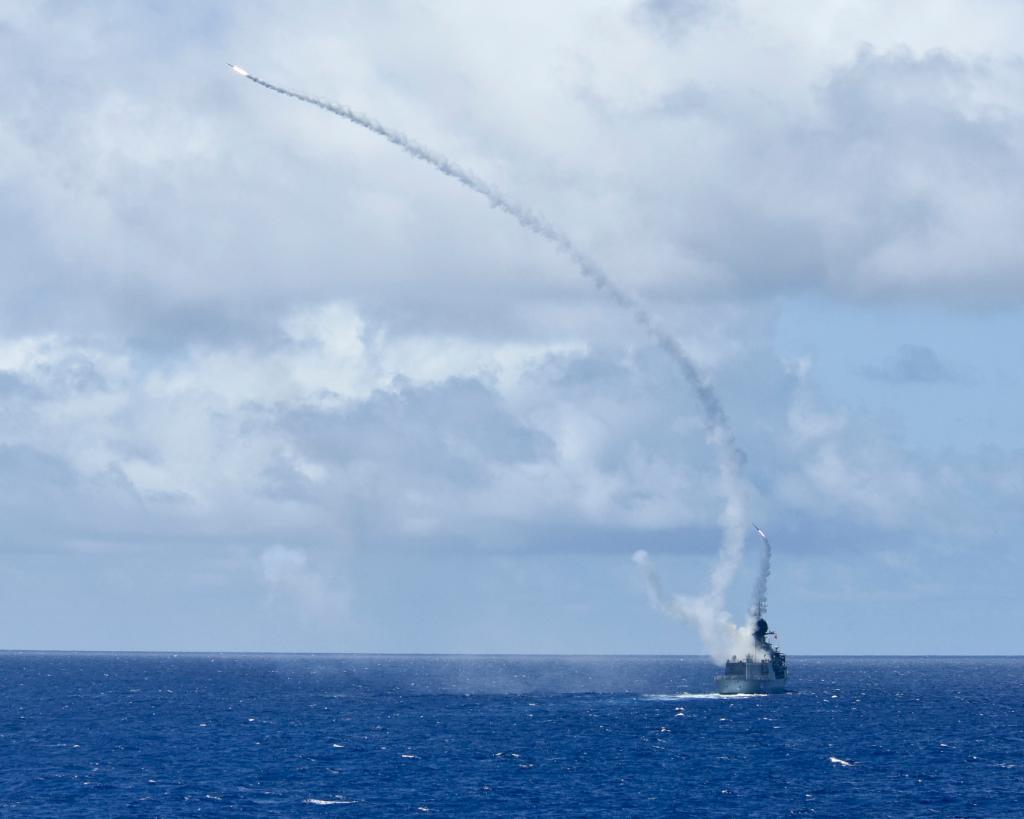The US Department of Defense (DoD) announced on November 28 that Raytheon had secured a nearly $400 million modification contract to manufacture Sea Sparrow missile assemblies for the US Navy.
The RIM-7 Sea Sparrow is a short-range anti-aircraft weapon system fielded by US warships and primarily used to counter anti-ship missiles. This missile was developed and produced by Raytheon and General Dynamics.
In a statement, the Department of Defense said, “Raytheon Company [of] Tucson, Arizona, is awarded a $397,679,384 … modification … contract to exercise options for fiscal 2023 guided missile assemblies, shipping containers, and spare parts.”
The contract will help meet the demands for full-rate Evolved Sea Sparrow Missile Block 2 production in the fiscal years 2021–2023. The US defense department said that nearly half (46%) of the contract’s work would be completed in Tucson, Arizona, in the United States.
The statement said that the rest of the work would be completed in other locations worldwide, including in Australia, Norway, Canada, Germany, the Netherlands, Greece, Turkey, and Denmark.

Previously, on September 30, DOD announced that Raytheon had received a $55.47 million contract modification (plus up to $22.76 million in option payments) from Naval Sea Systems Command to support the full-rate production of the Evolved Seasparrow Missile (ESSM) Block 2 for the USN and allied militaries.
Under that contract, the business will provide more spare parts in fiscal 2023. The work is planned to be completed in March 2025.
Early this year, Raytheon also received a contract from the US Navy to offer engineering and technical services for the Evolved Seasparrow Missile and NATO Seasparrow Missile programs.
The RIM-162 Evolved Seasparrow Missile (ESSM), a medium-range surface-to-air interceptor, is responsible for protecting navy boats from high-velocity anti-ship cruise missiles, low-velocity air threats (LVAT), including drones and helicopters, and high-velocity maneuverable surface threats.
The US Navy and 11 other nations that comprise the NATO Seasparrow Consortium developed it. NATO’s Seasparrow Project has been developing cooperative weaponry since 1968, making it its longest-running project.
Development History
In 1968, four countries (Denmark, Italy, Norway, and the United States) agreed to jointly build the NATO Seasparrow Surface Missile System (NSSMS). These countries also helped establish the NATO Seasparrow Consortium, which has 12 members.
In April 1991, the NATO Seasparrow Project Office proposed to the Project Steering Committee that the NSSMS should be modernized to improve performance against faster and more dynamic low-altitude threats. As a result, the present Evolved Sea Sparrow Missiles (ESSM) were developed.
The consortium members also shared the expense of developing a new version of the weapon system. Three nations not members of a consortium—Japan, Thailand, and the United Arab Emirates—have also acquired ESSM through foreign sales.
Countries involved in the projects are Australia, Canada, Denmark, Germany, Greece, Norway, Spain, Turkey, the Netherlands, and the United States. The US Navy received the first ESSM in 2002, and the missile entered service in 2004.
Raytheon was given a contract by Abu Dhabi Shipbuilding (ADSB) in October 2004 to supply MK56 ESSM vertical launching systems (VLS) for four UAE Navy Baynunah class corvettes.

The tail-control mechanism on the ESSM anti-ship missile increases speed and maneuverability. The missile is approximately 3.64 meters long, 254 millimeters wide, and weighs 280 kilograms. It can operate in all kinds of weather.
ESSM uses solid fuel to move at Mach 4 and relies on inertial navigation and semi-active radar for positioning. It has a range of around 50 kilometers.
ESSM can be launched from various launchers, including the NSSMS Mark 29 trainable launcher, the Mk 57 Vertical Launching System (VLS), the Mk 41 VLS, the Mk 48 Guided VLS, and the Mk 56 Dual Pack ESSM launcher.
The Sea Sparrow missile is interoperable with the Aegis weapon system. ESSMs are typically fired from the Mk 41 VLS on Aegis-equipped ships, with four interceptors “quad-packed” into a single launch cell.
The ESSM anti-ship missile is powered by a high-performance dual-propellant Mk 134 Mod 0 propulsion system with a high thrust. The engine is designed to operate in temperatures ranging from -14 to 133 degrees Fahrenheit.
The propulsion section remains the same in Block 2. The new guidance section uses a dual seeker head with active and semi-active guidance. The ESSM Block 2 initial operational capability (IOC) was achieved in 2021.
- Contact the author at ashishmichel(at)gmail.com
- Follow EurAsian Times on Google News




